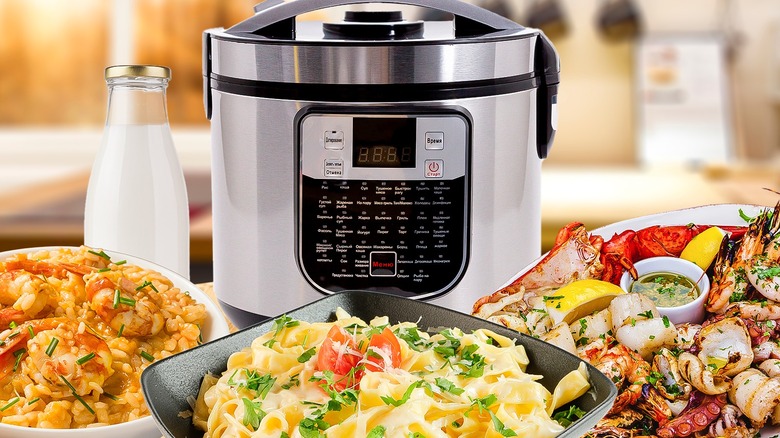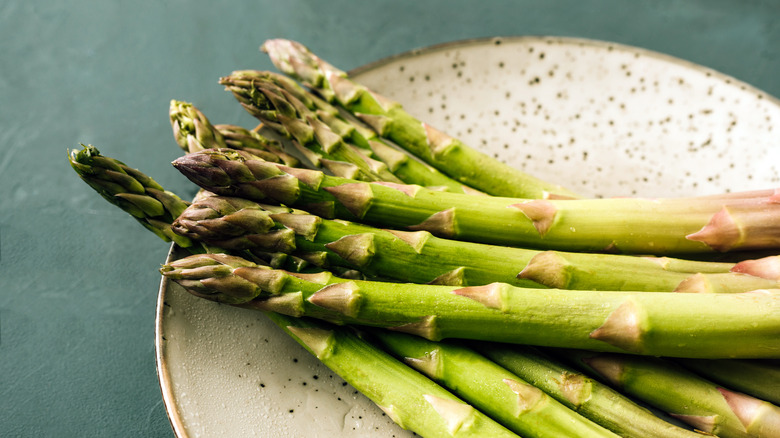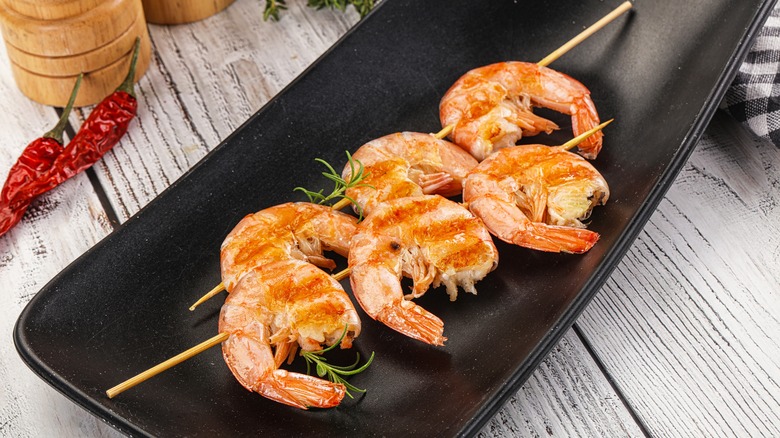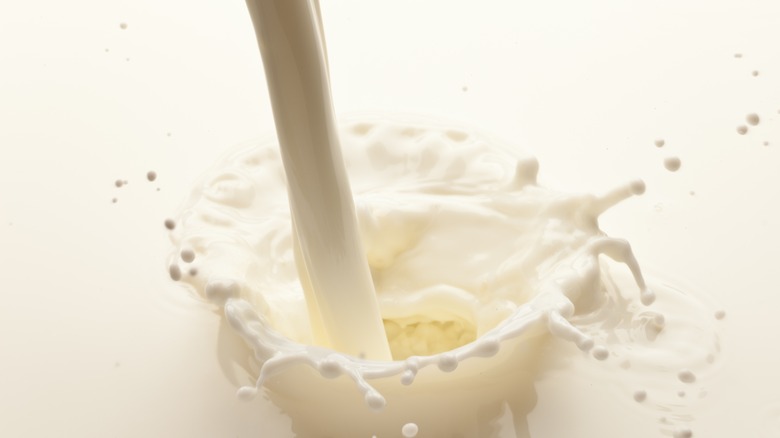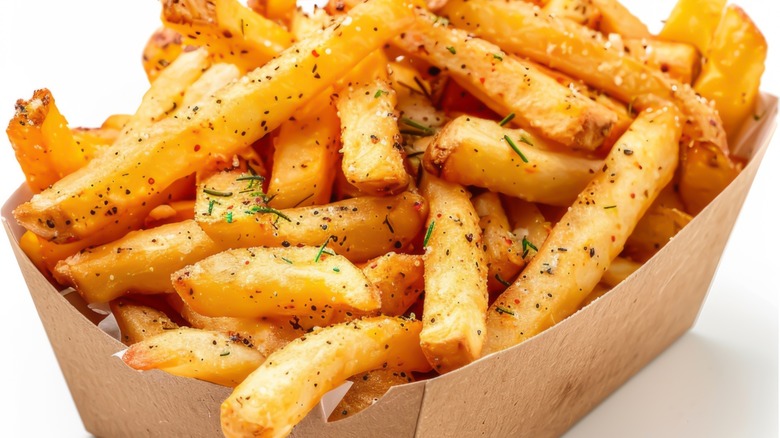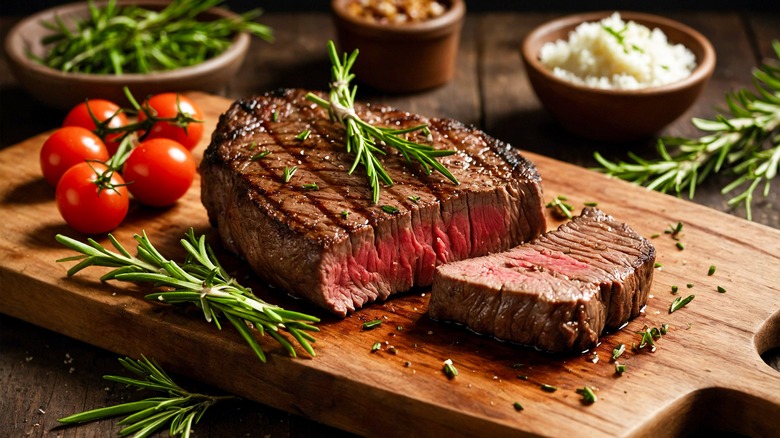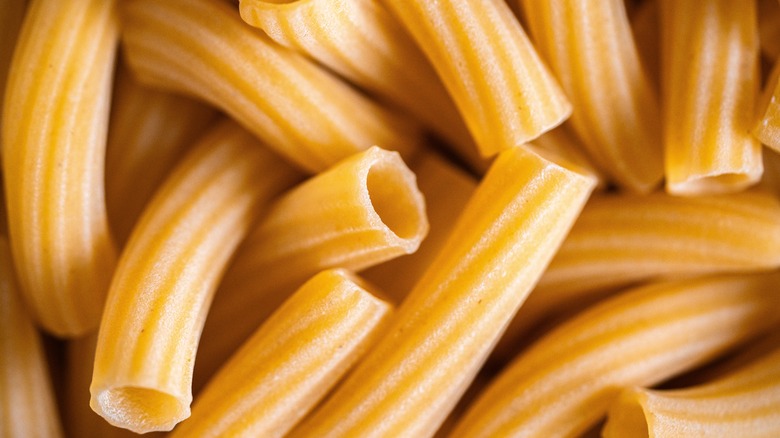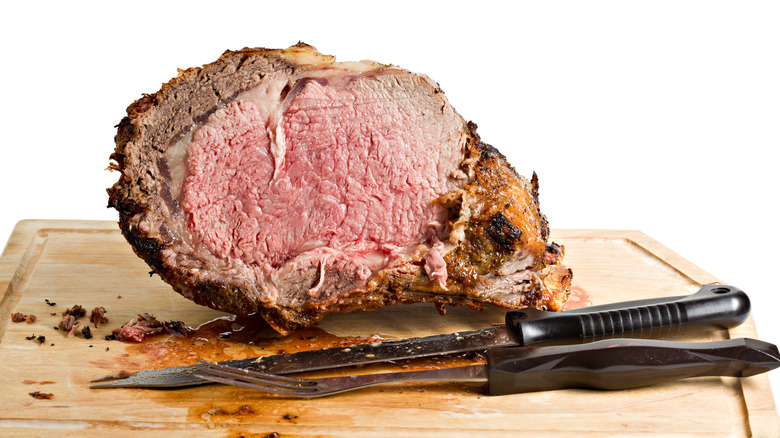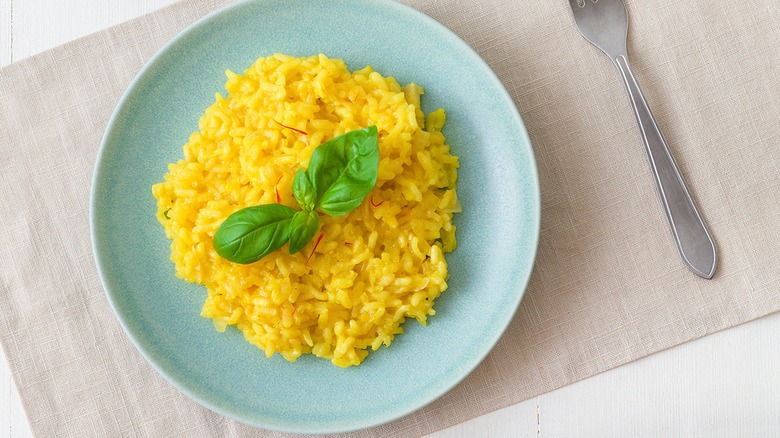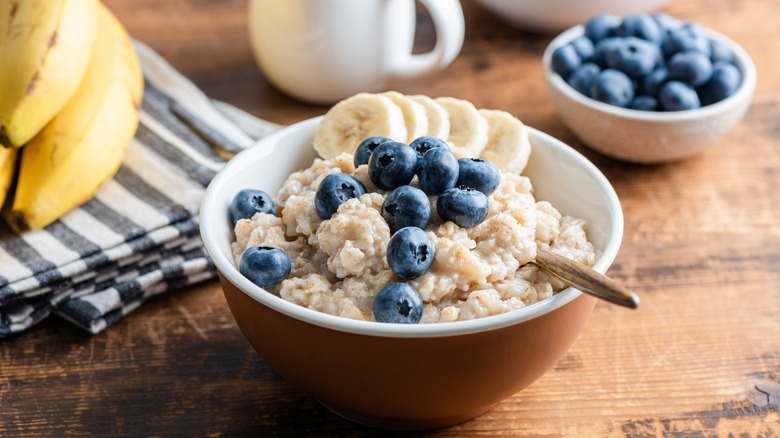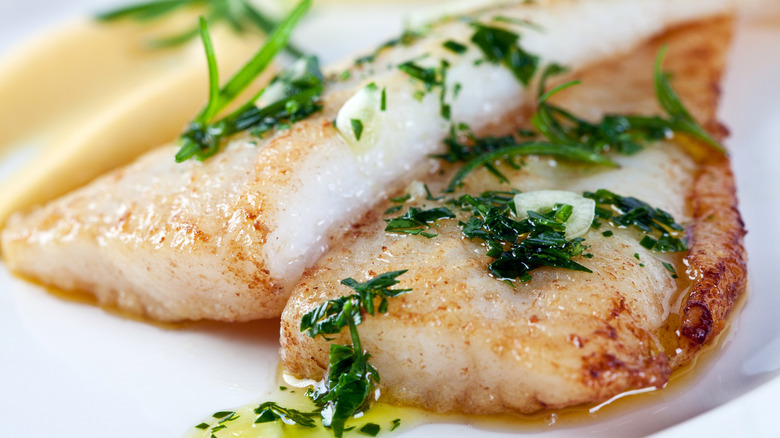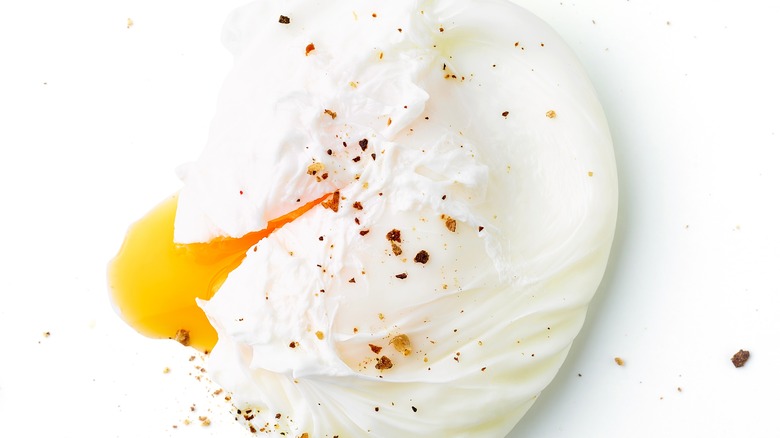11 Dishes To Avoid Making In Your Instant Pot
We may receive a commission on purchases made from links.
The Instant Pot has become a culinary sensation in recent years, allowing busy home cooks to make dishes in a fraction of the time thanks to its pressure cooking abilities. A multi cooker with functions for searing, steaming, and even a yogurt-making setting, it seems that this kitchen appliance is ready to take the place of virtually every other gadget in your home.
There are some foods, however, that aren't particularly suited to the high-pressure environment of the Instant Pot, and it may not be worth the risk of attempting them just to save a few minutes of cooking time. To help you sort out the genius hacks from the culinary disasters, I asked five-time cookbook author and Instant Pot expert Kristy Bernardo to share the foods that she thinks should stay well away from the device.
From scallops to steak, she explains which foods make a disastrous team with the Instant Pot, and which ones would simply taste better cooked in another way. Whether you have just unwrapped your shiny new Instant Pot or you've been using it for a while, these insights will help make sure your family dinners are fantastic every time.
Tender veg
There is no better sign of spring than the appearance of tender vegetables on your dinner plate. Asparagus, tenderstem broccoli, and spring greens are examples of vibrant green veggies that are packed with flavor and are so easy to cook. Their quick cooking time is exactly the reason that Kristy Bernardo suggests that you steer clear of the Instant Pot for these vegetables. "A great example of this is asparagus. It's so quick to roast it over high heat until it's crisp-tender. The odds of overcooking it in the Instant Pot are pretty high, and you won't save any time."
The way the Instant Pot works, even if you set the time to zero, your tender veg will still be overcooked. As the pressure builds, the water inside will begin to boil. Since this cooks the veggies for at least 10 minutes while the pot comes to pressure, you are likely to open the lid to a pile of mush.
In addition to overcooking them, boiling asparagus is actually a terrible idea, assuming you want it to taste good. The flavor molecules in asparagus are water soluble, so whether you boil them on the stove or pressure cook them in the Instant Pot, you will end up with asparagus-flavored water, and washed out vegetables.
Since these vegetables are super-easy to cook, it is better to find a method that allows you to cook for just a few minutes before removing them from the heat. "Even if it's the peak of summer heat and you don't want to turn your oven on, it would be better to saute [them] quickly in a skillet," advises Bernardo.
Shellfish
Shellfish is a wonderfully indulgent ingredient that many of us enjoy on a special occasion. King prawns, lobster, and scallops complement dishes with their delicate flavor and plump texture, but these factors are dependent on cooking them properly, and the Instant Pot is not the right place for that.
"Seafood — especially shrimp and scallops — should be avoided," warns Kristy Bernardo. "Seafood can easily be overcooked and it's difficult to get the timing just right."
Of course, just because pressure-cooking seafood is a poor choice doesn't mean you can't use the machine at all. The multicooker has a number of other functions, including saute and sear, which allow you to use it to shallow fry food like you would in a skillet. This cooking method will allow you to get a beautiful golden crust on the outside of shrimp or langoustines while still keeping them plump and juicy inside.
"I have used my Instant Pot to sear scallops when all my burners were being used for a holiday dinner!" admits Bernardo. "But there was no need to pressure cook them since a nice sear is all you'll need. Shrimp can also be cooked quickly (you can even poach them from frozen!), so there's no need for the Instant Pot."
Dairy
One of the great reasons to use an Instant Pot is to make cooking fuss-free and minimize the chances of burning food and the time taken to clean up afterward. With this in mind, you should be very wary of cooking dairy in the pressure cooker since it has a habit of causing it to curdle or burn, leaving you with a sticky mess and a disappointing dish. If you've ever had to scrape burnt food from the bottom of your stainless steel Instant Pot — I certainly have — then you will know it is not a fun task.
"Be careful with dairy products," warns Kristy Bernardo. "I love making soup in my Instant Pot — especially creamy soups. Any dairy should be added after a dish has already been pressure cooked, or you risk it curdling. If you have a recipe you love that calls for dairy products, be sure to leave them out until the other ingredients have been pressure cooked."
So, if you are planning to incorporate dairy into your Instant Pot dish, do a little forward planning and work out the best time to add it. The residual heat of the food that has been pressure-cooked will be enough to melt any cheese or incorporate milk or cream into the dish without it curdling.
Crispy items
If you're dreaming of crispy fried chicken or crunchy french fries, step away from the Instant Pot. A pressure cooker is a moisture-rich environment, which is one of the reasons it is so great for keeping food moist and tender. It is very much the enemy of crispiness, though, unless you have a magical alternative lid that can turn it into another cooking appliance entirely.
"Anything crunchy or crispy won't work," confirms Kristy Bernardo. "That said, you can buy an air fryer lid for the Instant Pot, and, although I've never used it personally, I've heard it works well. Unless you have that lid, however, I'd skip anything fried because it never turns out well."
The air fryer lid fits onto the top of the Instant Pot in place of the pressure cooker lid and transforms the machine into a fully functioning air fryer instead. Using this attachment, you can cook virtually any food that you would in the oven, and save money at the same time, since it heats up in a matter of seconds — no more 20 minutes of pre-heating a full-sized oven to cook a few bites of pakora.
It's important to understand that, despite the name, the air fryer lid for the Instant Pot will not give the same results as deep-frying food. However, it is a low-oil, healthier alternative, and it will allow you to crisp up food easily without making it greasy. It may not fit all Instant Pot models, so check if yours is compatible if you are considering buying one.
Steak
When it comes to deciding whether to use the Instant Pot to cook dinner, there are some foods which fit into the category of "can technically work, but will be better using some other method." One of these foods is steak. If you are going to the expense of buying steak for dinner, you want to make sure to cook it as perfectly as you possibly can, and it is unlikely that the Instant Pot will achieve that.
"I prefer steaks and burgers to be grilled rather than cooked in the Instant Pot," reveals Kristy Bernardo. It's technically possible — and they turn out pretty good — but nothing beats the grill for great steaks."
This won't always apply, of course, and you may prefer the convenience of leaving your meat to pressure cook while you focus on something else in the kitchen. Bernardo explains that there is a specific situation where she would pressure cook her steak. "The one exception to this is if I have a frozen steak and no time to thaw it. I sear it in the Instant Pot then pressure cook for a short time — it turns out surprisingly good! Still, it will never compare to a steak that has that nice charred flavor."
Pasta
You may think that cooking pasta in the Instant Pot is a convenient way to make a quick midweek dinner, but the logistics of making perfect, al dente pasta are not as simple as you might assume. Al dente means "to the tooth" and describes pasta that is cooked but still has a satisfying bite in the middle. When cooking pasta on the hob, you can taste a piece regularly to see how well it is cooked, something that is impossible in the sealed pressure cooker.
If you want to try pasta in the Instant Pot, it is crucial to understand the distinction between the two methods of pressure release in the machine. "Learn the difference between 'quick release' and 'natural release,'" urges Kristy Bernardo. "Quick release means you'll manually turn the knob at the top of the Instant Pot so that the pressure begins releasing instantly (be careful when doing this as steam will begin escaping immediately). Natural release means that when the time is up, you'll leave it alone to allow the Instant Pot to release the pressure very slowly."
Since the food will continue to cook during natural release, which can take at least 10 minutes, knowing which method you need for your pasta dish — or any other recipe — is crucial. You can always do both: Let the pressure release naturally for five minutes, then quickly let the rest out manually.
"Don't use quick release if your Instant Pot is completely full," Bernardo recommends, "or the steam that escapes might have liquid from the dish come out with it (this won't harm anything, but you might have a mess on your hands)."
Roast meat (without using the sear function)
If you were hoping that your Instant Pot could be used to cut down on the time needed to make a roast dinner — you're in luck. The moisture-rich environment is ideal for creating a juicy joint of meat where all the connective tissue has broken down nicely. However, an important part of roasting meat is a chemical reaction known as the Maillard reaction. This describes the process of the surface of the meat browning and contributes to the beautiful caramelized flavor. The pressure cooker itself cannot create that tasty golden crust, but fortunately, the Instant Pot has a different function that can.
"Another tip is not to forget the 'sear' function — it makes a huge difference to the end result," explains Kristy Bernardo. "The Instant Pot is great for speeding up the time needed to cook a roast, but if you skip searing it, you'll lose out on a lot of great flavor." Using the sear function allows you to create a caramelized crust on the meat before pressure cooking it, resulting in a moist joint of meat that is both tender and delicious.
Risotto
While a Google search for Instant Pot risotto will return plenty of results, with recipes guaranteeing a perfect risotto with none of the effort, this is one dish where you should be skeptical of such claims. Talk to any Italian, and you will discover that risotto is a labor of love — half an hour of stirring the pan lovingly, cooking out the starch from the rice until you have a wonderfully creamy dish to serve. The experience simply can't be matched by the Instant Pot.
Even if you are not bothered about having an authentic risotto cooking experience, making it in the Instant Pot simply won't give you risotto that is anywhere near as good as cooking it on the stove. Yes, you will have a finished risotto dish in a fraction of the time, but the inability to stir the rice as it cooks means that you are losing the essence of the dish. The chances of cooking the rice al dente are incredibly rare since you can't taste as you go, and it is more likely you will end up with soggy, overcooked rice with very little flavor.
The key to the perfect risotto is to add the broth a small quantity at a time, allowing the rice to absorb it before adding more. Adding all the liquid at the beginning before pressure cooking will result in washed-out flavor and a risotto that has none of the integrity of the original dish. If you don't have time to make a proper risotto — don't bother! Make another Instant Pot dish instead, and save risotto for an evening when you have enough time to give it the love it deserves.
Oatmeal
If you are a busy parent eager to make more home-cooked meals for your family, you may be hoping that the Instant Pot will allow you to do this quickly and easily. The good news is that in most cases it can, but if you're planning to make oatmeal in it, you probably shouldn't bother.
As with many ingredients on the list, the issue is that oats cook so quickly using other methods, so pressure cooking them is unnecessary. If you're not careful, the oatmeal could burn and stick to the bottom of the pot, which will be a nightmare to clean — not exactly the time-saving hack you would be hoping for. In addition, oats expand as they cook and can create a messy froth that can cause the valve to clog, meaning even more washing up. To prevent this, make sure your oatmeal mixture takes up less than half the volume of your pot.
The flavor and texture of the oatmeal can also be affected, ending up watery and mushy since you can't taste it as it cooks. When it is so easy to make a tasty pot of oatmeal on the stove, I would forgo the Instant Pot for breakfast and save it for making meals that usually take much longer to cook.
Fish
Although robust proteins such as poultry and red meat tend to do really well in the Instant Pot, when it comes to fish, it is not worth the risk of it overcooking and drying out. The delicate nature of fish such as cod or sole means that it should be cooked in a gentle manner, such as poaching or steaming. The Instant Pot does not allow you to check the fish as you cook, and the intense heat inside breaks down the protein too quickly.
Compared to meat, the protein molecules in fish are shorter and more easily broken down. This means it doesn't need much heat to reach flaky perfection, and the high-moisture environment of the Instant Pot can prove too much. Sturdier fish, such as salmon, have less chance of overcooking, but you must keep the cooking time short to prevent it from turning mushy. A better low-maintenance cooking option for fish is to cook it en papillote. Wrapping it up in a paper envelope before baking it in the oven keeps the fish moist and tasty without overcooking it. What's more, you can put vegetables in the envelope too, meaning the whole dish can simply be unwrapped at the table to reveal a delicious and easy midweek fish meal.
Poached eggs
If you think that your Instant Pot can help you make a protein-rich breakfast in the form of eggs, you may be right — but it depends on how you want them cooked. Hard-boiled eggs are a great option for the pressure cooker, allowing you to set the timer for five to eight minutes, put the lid on, and then forget about them. Poached eggs, on the other hand, are a little trickier, and making them in the Instant Pot probably isn't worth the risk.
When cooking poached eggs on the stove, there is a very fine line between a perfectly runny egg and one that is overcooked and set firm. Many home cooks don't even attempt poached eggs for this reason, though with a bit of practice, you can definitely master it.
Now imagine trying to poach them in a pot where you can't even see what they look like as they cook. At the mercy of the pressure cooker, you can only open the lid at the end of the cook and hope that they have not turned to rubber. Since poaching them gently on the stove only takes a few minutes, it is unlikely that you will be able to create a nicely cooked poached egg under that amount of heat and pressure.
Another trick when cooking them on the stove is to shape the eggs with a large spoon as they cook, preventing the whites from dissipating in the water. Without the ability to do this in the Instant Pot, the albumen will be able to roam free, leaving an unsightly mess that won't exactly look the part on your brunch plate.
